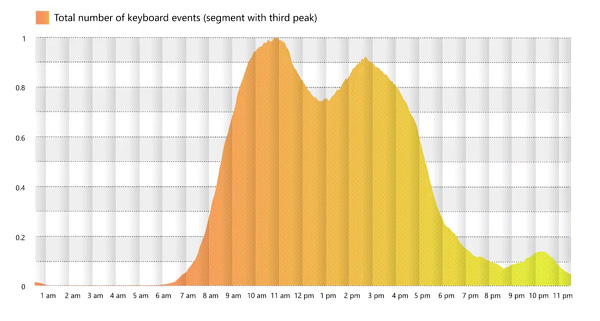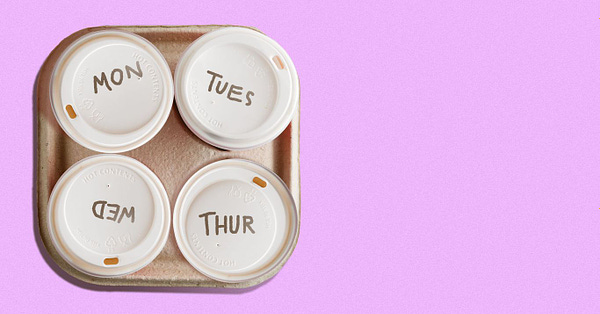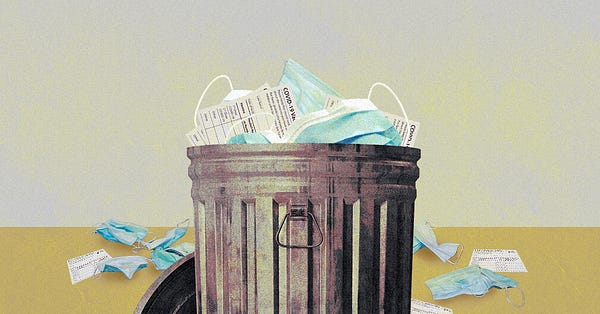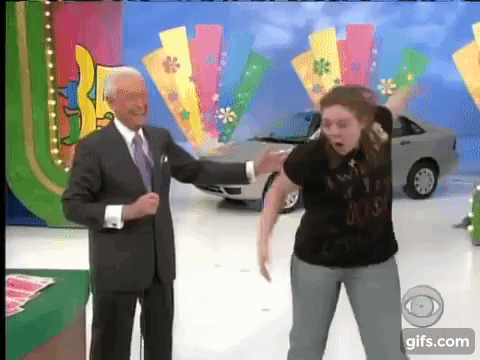Good morning and welcome to the Quarantine Creatives newsletter, a weekly companion to my podcast of the same name, which explores creativity, art, and big ideas as we continue to live through this pandemic.
If you like what you’re reading, you can subscribe for free to have this newsletter delivered to your inbox on Sundays:
In today’s issue, I examine how flexible work arrangements are reshaping things like sick time.
“Come On Down!”
As a kid, sick days were never very fun. If I didn’t feel well enough to go to school, it usually meant I didn’t feel well enough to do much else.
But there was one bright spot that people of my generation seem to universally remember from staying home sick- watching Bob Barker on The Price is Right at 11am on CBS.
Bob Barker hosted the iconic game show for 35 years, beginning in 1972 and continuing through 2007, when he handed the reins to Drew Carey.
In the pre-internet era, there was little else to do to pass time but watch whatever network programmers happened to put on TV. During regular school hours, this usually meant shows targeted for those way younger than me (toddler shows), or way older than me (soap operas and talk shows for adults).
But The Price is Right was (and still is) in that perfect sweet spot. It’s loud, frenetic, and colorful, but doesn’t play to any specific demographic. I could watch it alone, with my mom, or with my grandma and we could all be equally content.
As an adult, sick days have become nebulous, even in the “normal times” pre-COVID. I have worked hourly jobs where if I wanted to be paid for being sick, I would have to use PTO hours, thus forfeiting paid vacation time later. Let’s just say I probably didn’t call out as much as I should have.
I have also worked in the salaried corporate environment where sick time is officially a benefit, but it’s not often tracked. Generally, if you’re too sick to work, just don’t come in for a few days. A big reason for this was that once one person was sick, the same illness often made the rounds throughout the whole office, and nobody wanted that.
The last time that I was sick enough to miss work, I had the flu in 2018. I had to be absent for a few shoots, including the wrap of a season of Ask This Old House (the show’s painter, above, also missed the same days. We joked about it online afterwards).
The pandemic has dramatically changed our relationship to work in many ways over the last two years, especially for office workers with flexible working arrangements. I have discussed the positive benefits of this a few times, like here and here.
Today I wanted to look at a new challenge to navigate: what happens when you get sick, but your office is at home?
Working While Sick
For more than two years, my family has done everything that we could to avoid COVID exposure. We masked anytime we were indoors, socialized outdoors, and did not eat indoors at a restaurant since March, 2020.
Still, despite our best efforts, COVID came crashing down on our household this past week, with all four of us testing positive and displaying symptoms. We are fortunate to all be fully vaccinated and I am only feeling minor effects. So far, at least, it has felt like a mild cold.
Had I contracted a highly contagious disease at any other point in my life, I would’ve stayed home from work or school, spent most of the day on the couch, and watched that giant wheel spin on CBS. After all, I usually had to be in the physical building to get my work done. Not so these days.
Even though I’m fully remote, my company generously offers COVID relief days to allow employees time to recuperate. I could’ve logged off of work for a day or two, but I also had a remote shoot to attend, and several more in pre-production that needed attention.
If I wasn’t “at work” virtually, it would mean trying to hand off projects to colleagues, which can be more tedious than just doing the work myself.
Because all of our entertainment, communication, and work have shifted to online, I would’ve been staring at a screen most of the day whether logged into my work laptop or my personal one. Why not just get the work done since I still felt relatively healthy?
I was not going to infect anybody over Zoom and if I ever felt too tired, my bed is mere steps away from my laptop. So I decided to work through COVID, a decision that would’ve been unthinkable a few years ago.
I am okay with the choice I made to get my work done, but I also don’t want working while sick to be the expectation for everybody.
The Late Shift
There is also a big change happening in when we work.
Derek Thompson shared the findings of a study from Microsoft in a recent issue of his newsletter. Since the pandemic started, about 30% of workers are performing work tasks around 9pm:


Thompson points out that when you’re working from home, the lines between professional and personal get blurry:
“I don’t have one unified period of getting things done. I have several mini periods. Work isn’t a contiguous landmass of focus; it’s more like an archipelago of productivity amid a sea of chores, meals, mental breaks, and other responsibilities.”
Thompson also cites an increase in meetings, which leads to less time to perform actual work. Plus, home and family duties may require people to log off in the early afternoon but log back in late in the day.
My experience with this “third peak” of productivity has been more about balancing personal and professional tasks. For me, 8:00-10:00pm is for writing this newsletter, recording and editing my podcast, and other projects like that. The timing is the same as cited in the Microsoft study, which suggests maybe that’s an optimal time to be productive, even though it’s not part of the 9 to 5 routine.
As we think about the flexibility of our work schedule, it’s worth noting the proposal in the California legislature to mandate a four-day work week:


It seems unlikely that this law will pass in its current form, but the conversation has started. When the Fight for 15 protests began a few years ago, a $15 an hour wage seemed well outside of the realm of possibility, but now most fast food jobs advertise starting pay above that (at least here in Massachusetts).
Redefining Boundaries
Perhaps the silver lining in this whole pandemic has been a chance to rethink many of the assumptions about the way our systems worked, and who they benefited.
Kaitlin Byrd recently wrote about this idea in DAME Magazine:


Most of the article is about how we continually throw away what works at mitigating COVID in the name of returning to “normal.” My family seems to be an example of this, as do many others that cancelled Easter or Passover plans this week because of unexpected positive COVID test results.
But Byrd also touches on the opportunity of this moment:
“We have, with this brief respite, a chance to shift this paradigm and build not the next wave of the pandemic but the next version of us that can withstand it. We can choose four-day work weeks and upzoning suburbs rather than subsidizing sprawl. We can require better air filtration in densely populated spaces rather than rely on voluntary masking. We can value the care of children enough to ensure that the adults we entrust with the responsibility are safe, well-compensated, and structurally supported, instead of asking providers to prioritize their charges over their own survival. We can demand that if an economy is built to prosper from the deaths of a million citizens, it had better invest the blood money into the lives of the most vulnerable before it reaches the wallets of the most protected.”
I had the choice to work through COVID this past week. I know a lot of workers have not been so fortunate. There are many industries that were never able to go remote and even those that did, have started returning to in-person, despite the risks from COVID.

Thinking about work-life balance reminds me of that old childhood game of trying to balance an umbrella on your hand. It takes a lot of focus and hard work, and usually fails within a few seconds unless you are really paying attention.
Balancing our personal and professional lives takes focus, dedication, and a constant reassessment of what the priority should be and how we should get there. We seem to be in the midst of that assessment as a society, and I am eager to see where the umbrella lands when we finally figure it out.
This post has been updated to reflect positive test results that have confirmed COVID cases for all four members of my family.
Your Turn!
I’d love to hear from you! How do you balance work life and home life in the midst of the pandemic? Have you worked from home while sick? Do you check emails at 9pm or are you logged off at 4:59 every day? Leave a comment and let’s start a conversation!
Related Reading
What’s Next
On Thursday, I’ll be sharing an exciting interview I recorded with Wally Feresten. Wally has been the cue card lead on many NBC late night shows for a long time, including Saturday Night Live and more recently Late Night with Seth Meyers, where he has become known for his cameos. Wally talks to me about the particular craft of creating and holding cue cards, plus shares some amazing behind-the-scenes stories from his time in show business.
Subscribe to the podcast in your favorite podcast app to be among the first to hear it!
If you’d like to catch up on past episodes of the Quarantine Creatives podcast, they can be found on Apple Podcasts, Spotify, or wherever you listen.
Please consider sharing this with a friend that you think might enjoy it, or better yet, share it on social media so you can tell hundreds of friends!
If you’ve missed past issues of this newsletter, they are available to read here.
Stay Safe!
Heath






